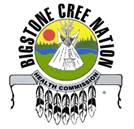The wildfire danger for the Lac La Biche Forest Area has dropped to MODERATE for today. Areas across the southern part of the area received precipitation yesterday and more is expected Saturday. Please note that not all areas are receiving rain! Until we receive widespread precipitation, the fire ban and off-highway vehicle restriction remain in effect. We’re keeping a close eye on this and as soon as we receive enough rain to make a difference across the whole area, we will re-examine the fire ban and quad restriction. Visit albertafirebans.ca for up to date information.

Rock Island Lake Complex (LWF-099 and LWF-119). See MAP
LWF- 099 received approximately 3 mm of rain yesterday, while LWF-199 received none. Wind speeds over the fires will be E 20 km/h today, causing low-intensity ground fires to flare up, which will produce smoke.
LWF-099 – Out of Control at approx. 8600 hectares in size – 27 per cent contained.
The wildfire started May 21, 2018, and is located 10 km east of Secondary Highway 813. It remains 14 km north of the hamlet of Calling Lake. The community is not under threat at this time. Yesterday, the wildfire did not grow in size and today, firefighters will continue to focus on the northern perimeter and are now able to go into the southern perimeters, looking for smouldering ground fires to extinguish. 9 helicopters will be supporting the firefighters by bucketing on larger flare ups. 9 pieces of heavy equipment are making good progress as they build fire guard on the east perimeter.
Smoke: East winds may push smoke onto secondary Highway 813 today, motorists traveling in the area can call 511 or visit www.551.alberta. Residents in Calling Lake and/or Sandy Lake may also see smoke. For smoke advisories see airquality.alberta.ca, or learn more about Wildfire, and Smoke, and Your Health by Alberta Health Services.
LWF-119 – Out of Control at approx. 5300 hectares – 42 per cent contained.
The wildfire started May 23, 2018, and remains approximately 12 km east of LWF-099, along the east and west sides of the Athabasca River, but is west of McMillan Lake. No communities are at risk. Today, firefighters are able to focus on the north and eastern perimeters of the wildfire looking for smouldering ground fires, while 9 helicopters with buckets support.
